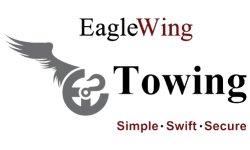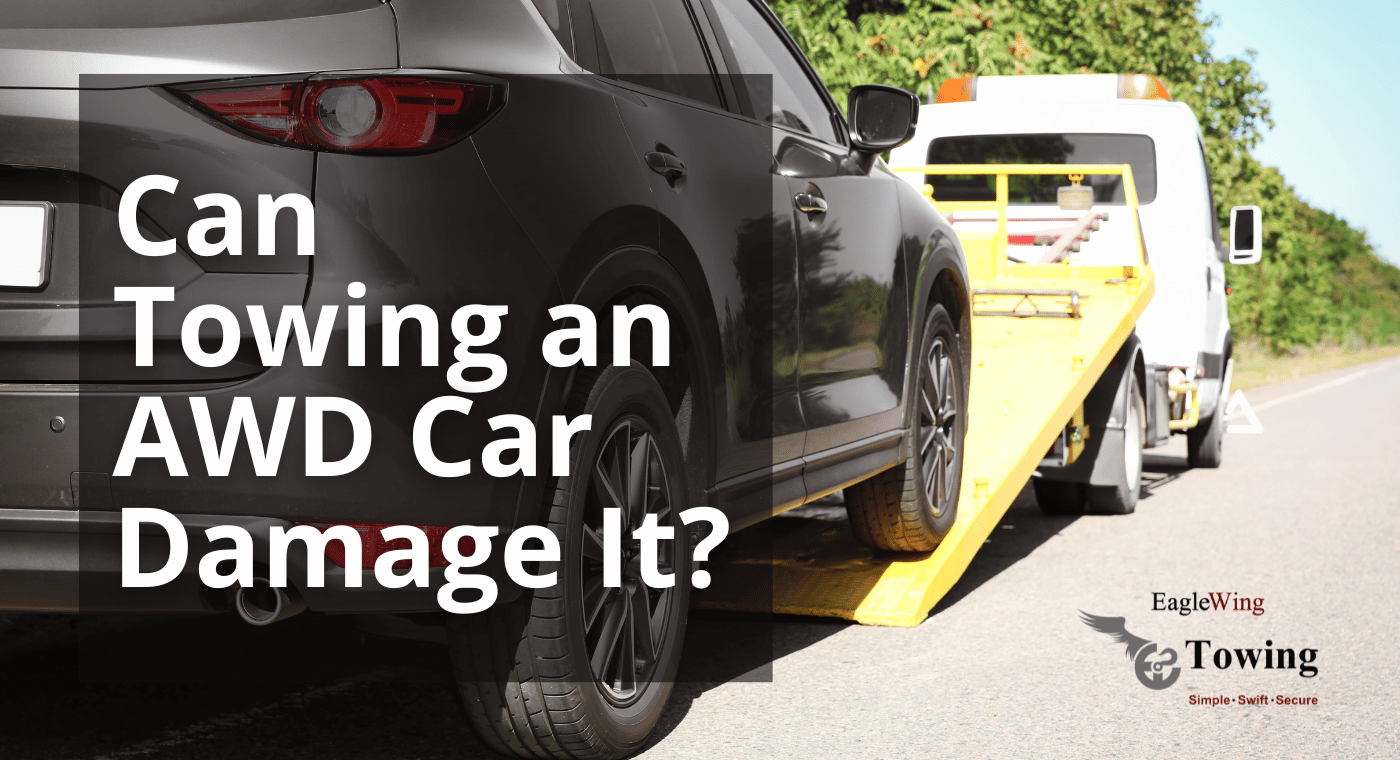AWD cars have surged in popularity recently, offering drivers a versatile, safe, and reliable driving experience across various terrains and weather conditions. As more drivers embrace AWD cars, knowing their disadvantages also becomes important. All wheel drive cars in contrast to their front wheel drive (FWD) counterparts are harder to maintain due to their interconnected drive components. As with transporting any vehicle, one question towing companies often get is: does towing an AWD car damage it? In this post, we will analyze the potential risks and precautions involved when towing an all-wheel-drive (AWD) vehicle.
Understanding Towing Basics
Before we explore the specific concerns regarding towing an AWD vehicle, let’s get familiar with the basic principles of towing. Towing involves moving a vehicle using another vehicle, typically a tow truck. The towed vehicle could be in various states, from being in neutral to being stuck in park mode, each bringing its own set of challenges.
Different Towing Methods
Towing encompasses three primary methods:
- Flatbed Towing: This method involves winching the vehicle onto a flatbed tow truck. It’s often considered the safest way to tow a vehicle as it completely lifts the car off the ground, minimizing potential damage.
- Wheel Lift Towing: In this method, two non-driving wheels remain on the ground. This approach is generally safe if the parking brake is disengaged.
- Four-Wheel Towing: This method involves towing a vehicle with all wheels on the ground. It’s primarily used for short distances and slow speeds to minimize potential damage.
Possibility of Damage While Towing an AWD Vehicle
AWD vehicles, known for their superior traction and handling, present specific challenges when it comes to towing. This is primarily due to the design of their drivetrains, which distribute power to all four wheels simultaneously. Incorrectly towing an AWD vehicle—with its transmission in park and the parking brake activated—poses a serious risk to an automatic transmission.
Transmission Damage
One of the primary risks in towing an AWD vehicle is transmission damage. If an AWD vehicle is towed with its drive wheels on the ground and the vehicle left in 1st gear, it can lead to severe damage to the transmission. This is because the wheels’ motion can cause the transmission to turn without the proper lubrication, resulting in excessive friction and heat, which can lead to failure.
Differential Damage
Another potential risk involves the differentials, which allow the wheels on an AWD vehicle to spin at different speeds. If the vehicle is towed improperly, it can place undue stress on the differentials, potentially causing them to fail.
Best Practices for Towing an AWD Car
To avoid damage when towing an AWD vehicle, certain precautions and best practices should be followed.
Using a Flatbed Tow Truck
The safest way to tow an AWD vehicle is to use a flatbed tow truck. This method lifts the entire vehicle off the ground, preventing any potential transmission or differential damage. It also eliminates the risk of bumper damage, a common issue if the winch hook is improperly positioned or if the wrong equipment is used.
Removing the Drive Shaft
If a flatbed tow truck is not available, another option is to remove the rear drive shaft and tow the vehicle with the rear wheels on the ground. This method can prevent damage to the transmission and differentials. However, it’s a more complex procedure that should only be performed by a professional.
Consulting the Owner’s Manual
The vehicle’s owners manual often contains specific towing instructions. It’s crucial to check these guidelines before towing an AWD vehicle to ensure proper procedures are followed.
The Liability of Towing Companies
When your AWD car needs towing, selecting the right tow company is crucial. A reputable service understands the intricacies involved and takes every precaution to ensure your vehicle arrives at its destination unscathed. But what happens when things don’t go according to plan?
Towing companies may be liable for damage to AWD vehicles if negligence can be proven. This includes scenarios where a vehicle wasn’t secured properly, or the wrong towing method was used, leading to stress on the drivetrain and other critical components. It’s a situation no vehicle owner wants to face, as it can lead to costly repairs and a significant headache.
Choosing the Right Tow Company
To mitigate damages to your car, it’s important to choose a towing company with experience in handling AWD vehicles. Before you agree to their services, don’t hesitate to ask how they plan to tow your car and what measures they take to avoid causing damage. A professional tow company will be transparent about their processes and happy to provide reassurance that your vehicle is in safe hands
Key Takeaways
Towing an AWD car can potentially cause damage if not done correctly. However, using a flatbed tow truck or removing the drive shaft, these risks can be minimized. It’s also critical to consult the owner’s manual for specific guidelines.
Remember, the goal is not just to transport the vehicle but to do so without causing additional damage. If you ever find yourself in the unfortunate situation of needing to tow your AWD vehicle, being informed about these factors can make the difference between a safe tow and potential negligent damage.


